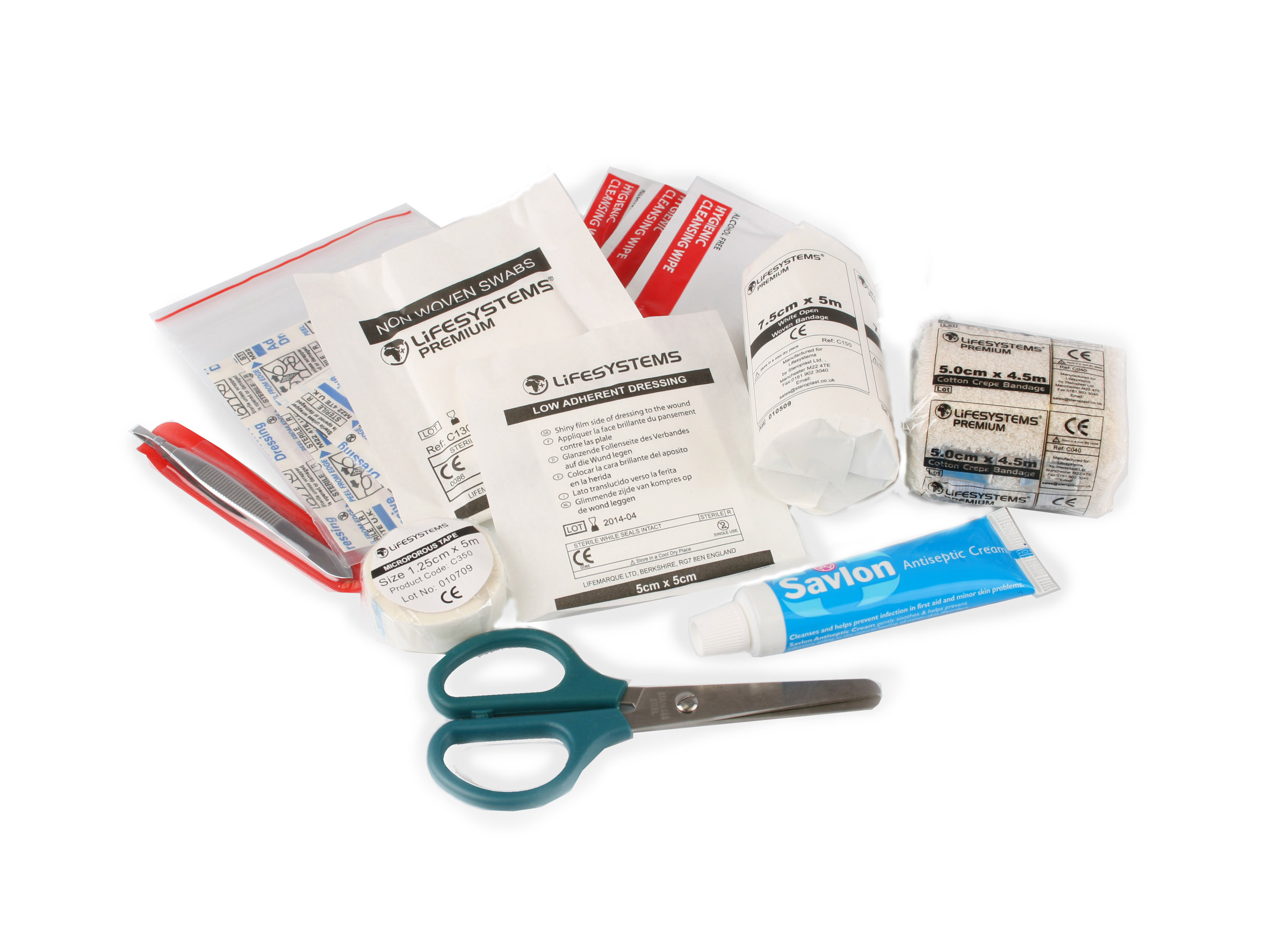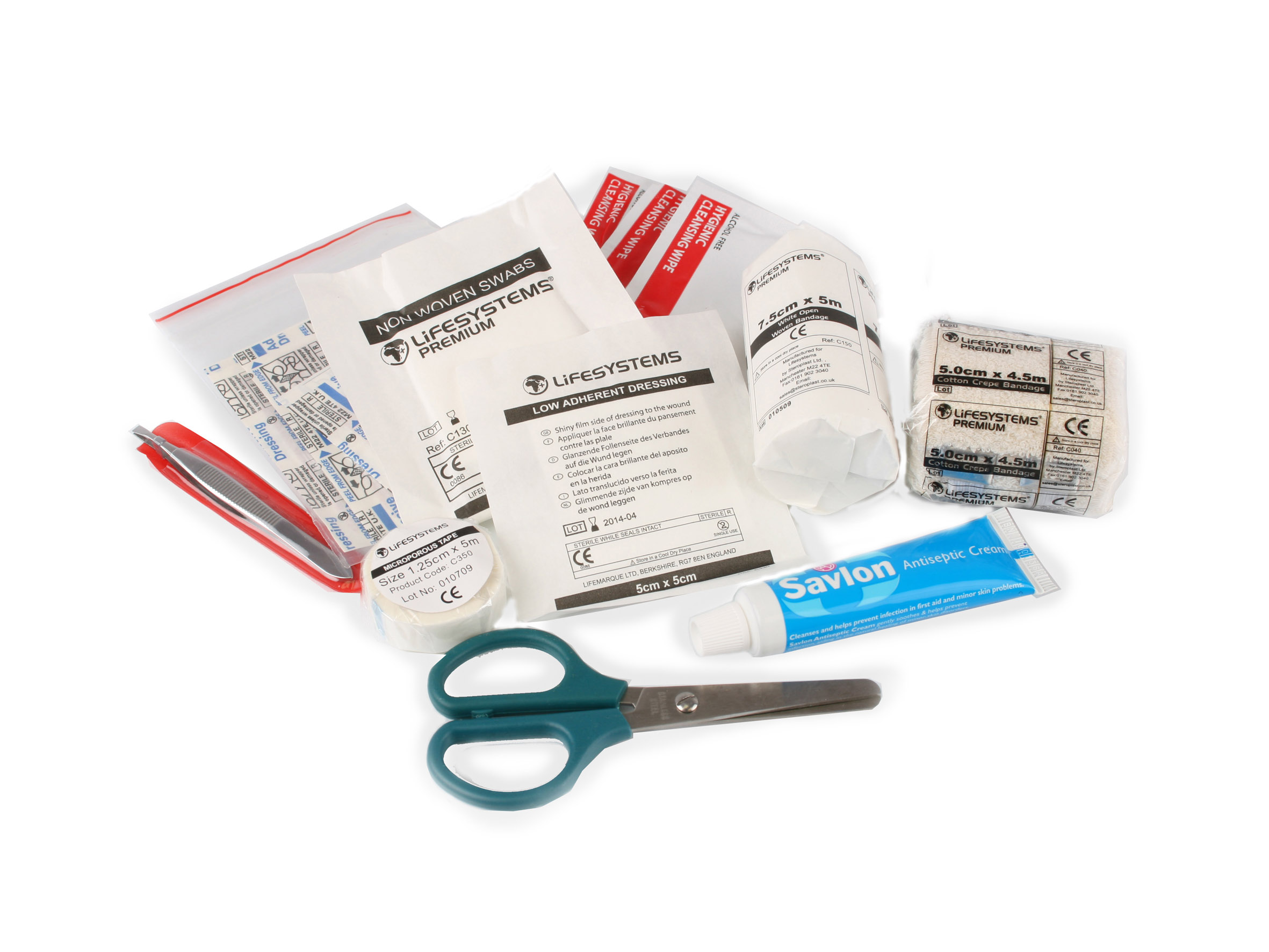Although you may not end up using the contents of your travel first aid kit, it’s still important to make sure you pack one, just in case you suffer cuts and scrapes and other minor injuries during your trip. For many destinations around the world you will find that a basic first aid kit containing plasters, bandages and dressings should suffice.
Essential Items for your First Aid Kit
Most ready-made first aid kits for travelling will contain most of the items you need, with more deluxe options often containing paracetamol and specialist items such as burn gel. In this post we aim to provide you with tips on which first aid items to pack and which ones to leave behind. Whether you choose to buy one of our specialised travel first aid kits or make up your own, you should ensure that it contains the following accessories.
1) Bandages – this could be in a roll or different sized strips
2) Adhesive dressings – a selection of different sized adhesive dressings can come in extremely handy, or if you buy larger ones you can cut them down to size to fit the wound.
3) Alcohol wipes/Anti-septic – A must have for any traveller, cleaning out a cut or scrape before covering it up with a plaster, dressing or bandage will help to prevent infection.
4) Scissors – These are great for trimming bandages and dressings and can also come in handy for other things during your trip!
5) Tweezers – Great for pulling out splinters that get stuck underneath your skin, and like with scissors, they can come in useful for other things.
6) Surgical/Microporpous Tape – This will help to hold your dressings in place or can be used on alone on minor cuts.
7) Safety Pins – Again, these will help to hold dressings in place and are a must have for your kit.
Why Would I Need Sterile Needles in My Kit?
Including sterile needles and syringes in your travel first aid kit may seem a little OTT, but as mentioned previously, they are invaluable in case of medical emergencies when travelling to developing countries and remote areas.
If you became ill and needed emergency medical attention in countries with poor medical facilities, would you trust that the syringes and needles used weren’t contaminated? Sterile needle kits are developed so that they can be handed to a qualified medical professional and used in an emergency to administer treatment.
Some of our more deluxe first aid kits also contain sterile needles, as well as an IV cannula and all the basic first aid gear you’ll need, so if you’re travelling to remote areas, one of these kits may prove useful.
Medicines & Other Accessories
If you opt for a basic travel first aid kit it is likely that it won’t contain items such as paracetamol, oral rehydration salts and loperamide, which are must have items for any traveller, no matter what your destination. While you may be able to find these items fairly easily when travelling in European countries, this may not be the case for other destinations such as Africa and Asia.
Unless you plan on buying bottled water every day, which isn’t always possible or eco-friendly, you may want to bring some water purification tablets or drops with you. In many countries water will be unsafe to drink and can cause stomach upsets or more serious illnesses such as Giardia unless you treat it with chlorine dioxide or another form of treatment.
It also goes without saying that you will need to bring any medication that you are currently taking, and make sure you have a supply to last you for the duration of your trip. Some countries do have restrictions on the quantities and types of medication that you are allowed to bring into the country with you, so make sure you do your research before departure to avoid any problems.
Insect Bite & Sting First Aid
For the more adventurous traveller heading off the beaten track, ticks may prove a problem, and one item you won’t find in many first aid kits is a tick remover tool. Ticks can cause a host of medical issues, including illneses such as Lyme Disease and Tick-borne Encephalitis. So if a tick decides to hook itself on to you, it will need to be removed properly by using a special tick remover tool, never use tweezers as they will not safely and effectively remove the tick.
It’s also wise to pack bite and sting relief in your first aid kit, as you may suffer from the occasional insect bite or plant sting during your trip. Putting some of this on before bed will help to soothe bites and stings and reduce your urge to itch, so you won’t have a restless and uncomfortable night. You should always use a good insect repellent to help avoid insect bites, as not only do they cause discomfort, but they can also result in tropical disease.
So there you have it, the low-down on some of the essentials we would recommend packing in your travel first aid kit. Hopefully this has armed you with the knowledge to go and create your own custom kit, or you will have a better idea of which of our travel first aid kits would be most suitable for your trip.


